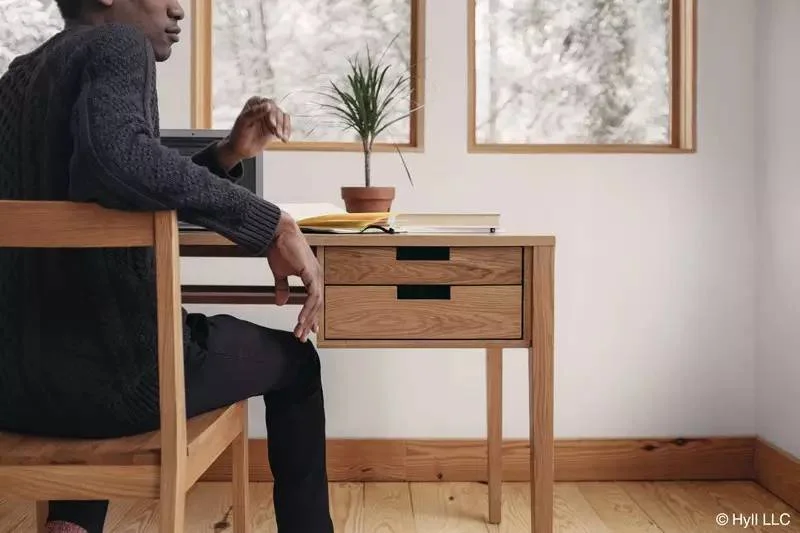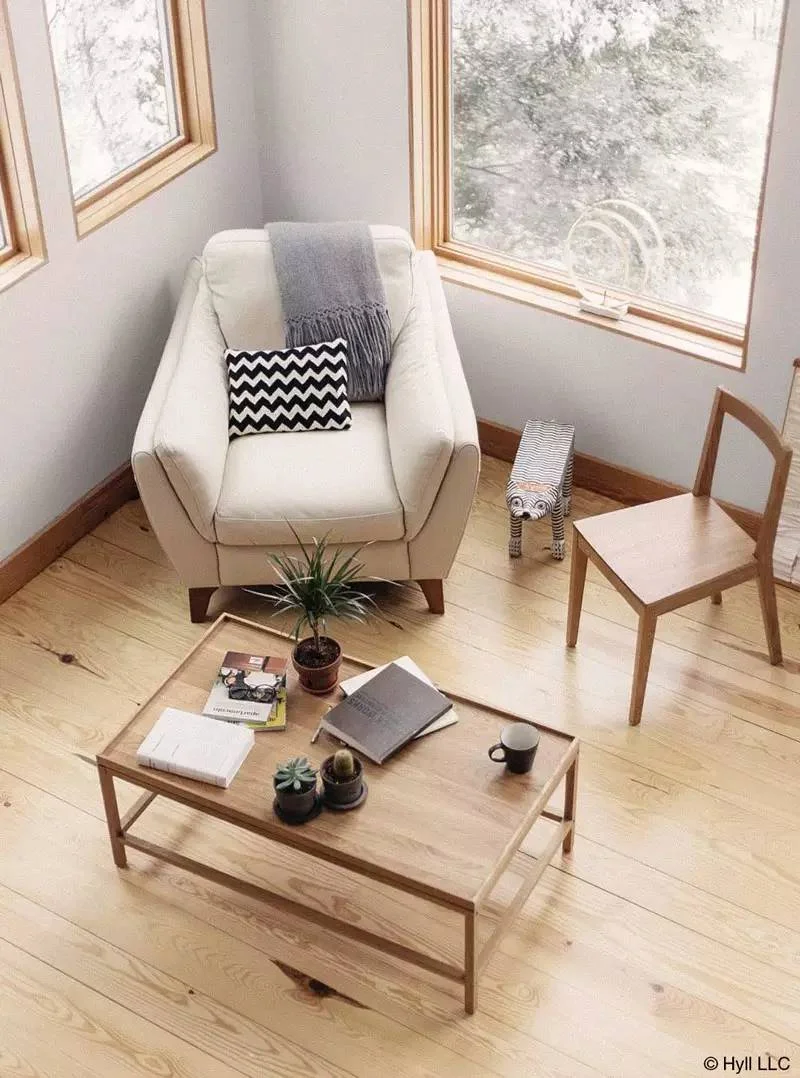践享第六期 男女搭配,设计真美 / HCWD & Akron Street
尺度上的转换从未影响建筑师在产品设计上的创造力,密斯的巴塞罗那椅、阿尔托的玻璃花瓶、埃姆斯夫妇的沙发凳,这些来自建筑师的经典之作曾经为产品设计注入过莫大活力。如今,这样的活力仍旧昂扬,越来越多的年轻建筑师开始耕作于“小而美”的生活物件。践谈的第六期践享,我们就请到了这样“两对”带有建筑学背景的产品设计师,他们很年轻,却都已经有了十分优秀的作品,这些设计虽小,但其中蕴藏的能量却不容小觑。
From Mies' Barcelona chair to Aalto's vase, furniture and home products have been a continuing fascination for many generations of architects. For lifestyle product design studios run by architects, such shift in scale means certain freedom, but it also poses many new challenges from detailing to prototyping, manufacture and distribution. The sixth APT presentations were perhaps the most poetic and most close to home. We brought together two studios and their co-founders. These four young architects and their outstanding design sensibility have gained high praise from both critics and users. Behind their success, is the story of how small design decisions make all the difference.
活动现场 / Event in Studio Link-Arc(特别感谢Link-Arc事务所为践谈提供场地)
HCWD 炘工作室:融入生活的设计
Design that makes sense
(图左)刘烨,建筑设计师,炘工作室创始人,曾任职RTKL、艾未未工作室、矶崎新建筑事务所、Tsao & McKown建筑事务所。Cranbrook Academy of Art建筑设计硕士,同济大学建筑学学士
(Left) Liu Ye, Architectural Designer, co-founder of HCWD Design, former designer at RTKL, Ai Weiwei Studio, Arata Isozaki Associates and Tsao & McKown. She earned her Master of Architecture Degree from Cranbrook Academy of Art and Bachelor of Architecture from Shanghai Tongji University.
(图右)王新钧,工业设计师,炘工作室创始人,曾任职台北DID Institute设计公司。Cranbrook Academy of Art 工业设计硕士,台湾成功大学工业设计学士。
(Right) Wang Hsin-Chun, Industrial Designer, co-founder of HCWD Design, former designer at DID Institute in Taipei. He holds a Master of Industrial Design from Cranbrook Academy of Art and a Bachelor of Industrial Design from Taiwan Cheng Kung University
炘工作室,成立于美国纽约,专注的领域跨越工业设计与建筑设计。创立者为工业设计师王新钧与建筑设计师刘烨。以符合人本,融入环境,辅助生活为主要走向,不追求无意义的美观,而追求产品真实的美好面,建筑的在地性和实用性。以建筑视界下的工业设计,工业设计视界下的建筑设计,透过宏观与微观的视角去发现、体验、理解生活中大大小小的瞬间,并以此作为根基,经由实践去探索各种新的生活模式。
Focusing in realms between and beyond industrial design and architecture design, HCWD was cofounded in New York by industrial designer Wang Xinjun and architectual designer Liu Ye. At its core is a sense of humanism; its products fit so effortlessly into their context and essential parts of our life. Stripped of unnecessary embellishment, their design seeks the meaning of understatedly beautiful elements, a sense of place, and functionality. It is an industrial design practice with the perspective of architecture design, and the kind of architecture design studio that operates with the insights of industrial design. With lenses zoomed in at multiple scales, it explores the transient moments of our lives, big or small.
作品分享/ Design Works
极窄的构造少去了很多"桌"的功用,但却打开了一个新的领域交流。目的是在创造一个人与人交流的"场域",高脚桌的高度在人因上设定在最适合靠手的高度,而高脚椅让人即使倚坐着,视线高度仍能维持着与站立的人相同的高度,桌与椅的高度设计让使用者能交叉摆放桌椅。省去复杂的构造与装饰,长宽高是设计原始的要素,而AA桌凳的每一个尺寸都以达成"人与人交流"而被设定出来。
The "super narrow" strips away a lot of functionality of a "table", but opens up new channels for communication. Such consideration is to create a specific "site" for human to human dialogues. The high table is set at the height that is ergonomically most fit for elbows, and the height of the stools forces you to meet the eye level of those who are standing even when you're sitting down.Complex structure and decorations eliminated, the design revisits the most essential elements that are height, width and length. Every dimension of the AA Furniture is designed to foster conversations.
四分之一凳/Quarter Bench
木眼玩具/Eye Toy
阳光草坡/Solar Panel
砖灯/Brick Lamp
砖灯最大的特色在于回归原始的使用习惯,设计理念着重于符合人性、容易理解、没有负担。人最原始控制光线的方式,是利用遮挡大自然的光源:阳光与火。砖灯最初是想设计一款不需要开关的灯,我们利用特殊的机构,使人无法察觉到电源的开与关,人会误以为光源从没消失,是一个恒定的光源,只是打开砖把光放出来与阖上把光遮起来这样一个直觉性的动作而已。
The most important design feature of the brick lamp is its return to the most original user behavior. It must be intuitive and easy to use. The most original human behavior of controlling light is to block the source of light from found sources such as the sun and fire. The brick lamp was first designed to be a light without a switch - it was engineered so that people can't find any ON/OFF button, so they can return to the most intuitive act of opening to and blocking from the light source.
最早在选择材质时,觉得这个砖灯的外壳必须有那种致密、厚实、阻绝(光)的意象,所以选择了厚实的金属与水泥。后来考量到手掌的握感还有与其他家具搭配,又加入了实木的版本,而在选择木种时,找了硬度高、质地密、含水量低的胡桃木作为的木质版的材质。
When first set out to select a material, it felt as if the exterior shell of the brick lamp must be dense, heavy, almost blocky. Heavy metal and cast concrete became the first prototype materials. Solid wood was added to the material palette because it would fit well with other wood furniture and is warm to the touch. Finally hard wood (walnut) was selected for its high density and low water content.
我们的设计目的是希望能稍稍让现代紧绷的生活放松一点,砖灯其实大可做遥控开关、触控调光、无线充电甚至智慧情境光,但是每增加一种功能,使用者的负担就会加大一点,这不是我们所乐见的,这也是为什么最后砖灯的设计是就是一块没有按扭、不用设定与看说明书的一“块”够用的灯。
The goal of HCWD's design is to help slow down the fast-paced modern day of our life. As a matter of fact, the brake lamp could have had remote control, touch adjustment capacity, wireless recharge or even smart light that changes with your mood, but with every additional function there is additional burden to the users. That is the reason why the final design of the brick lamp is without buttons, any settings, or even a user manual.
Akron Street 工作室:营造一个家
Making the things that make the home
(图左)Hansley Yunez,曾任职于藤本壮介建筑设计事务所和如恩设计研究所,Simon Fraser 大学分子生物学和生物化学学士,哈佛大学GSD建筑学硕士。在从事设计行业前,Hansley成立过一家化学贸易公司。他的创业精神、设计天赋及对技术的浓厚兴趣促成了Akron Street品牌的建立。
(Left) Hansley Yunez, previously worked at Sou FujimotoArchitects and Neri & Hu Design &Research Office. He holds BSc in Molecular Biology and Biochemistry from Simon Fraser University and a MArch from Harvard GSD. Before starting his career in the design field, Hansley founded a successful chemical trading company. AkronStreet lies at the intersection of his experience in entrepreneurship, his eye for design, and a deep interest in technology.
(图右)Lulu Li,曾任职于隈研吾建筑设计事务所,现任Skidmore Owings &Merrill建筑设计师,耶鲁大学建筑学学士,哈佛大学GSD建筑学硕士。Lulu致力于探索数字和实体媒介之间日益紧密的关系。她亦曾创立Bikenapped,一个由使用者自发生成的自行车盗窃案发地图信息系统,该项目位于波士顿和旧金山。
(Right) Lulu Li, previously worked at Kengo Kuma & Associates and is currently an Architectural Designer at Skidmore Owings & Merrill. She holds a BA in Architecture from Yale University, and a MArch from Harvard GSD. Lulu is interested in the evolving relationship between digital and physical mediums. She is also the founder of Bikenapped, a user-generated bike theft mapping project in Boston and San Francisco.
作品分享/ Design Works
Draper桌和Concord椅 / Draper Desk & Concord Chair
对于家具设计的最初想法源于我们研究生时装修公寓的经历。作为建筑学学生,我俩需要一张宽大的工作桌。我们在Craigslist(美国常用分类广告网站)上花费了数小时却毫无收获。我们发现大量和我们有相似需求的人,在现有的市场中无法找到我们所希望的产品。最终我们决定自己制造这个工作桌,这也为日后创立Akron Street品牌埋下了伏笔。
Our first thoughts about furniture came when we were furnishing our grad school apartment in Cambridge. We were both in architecture school, and we were looking for a large work desk for the two of us. We scoured Craigslist for hours, only to find there was very little out there. It turns a lot of other people felt the same way we did, and that there was a real lack in the market for what we all wanted. We ended upbuilding that desk ourselves, and that experience planted the seed for what would become Akron Street.
我们的家具源自真实的材料,现有的系列取材白橡木实木,采用简洁的现代形式,同时也能唤起某些亲切感。我们认为Akron Street 所要创造的物件都是为了营造一个家,那个当你进门脱下鞋之后就能享受舒适的地方。
Our furniture is made of real materials - all solid white oak in our current collection - with clean contemporary lines, while still evoking something familiar. We like to say that Akron Street is about making the things that make the home,where you can leave your shoes at the door and just be comfortable.
Ko桌和Concord椅 / Ko Table & Concord Chair
在Kenya Hara的书《被设计的设计》中,有一段提及了认知理论,关于“承载”,意即世间的种种现象都是由行动的主体和“承载”事件的环境所构成。举个例子,我们之所以能够站立是因为一方面我们有站立的意图,而另一方面是因为有重力的作用和一块能够立足的地方。这也基本表达了我们对于家具的理解,设计既是关于产品本身,也是在探求能够为人承载些什么。我们想要通过设计创造一个能够让人们活出自我的环境。
In Kenya Hara’s book Designing Design, there was a passage about the cognitive theory of affordance, this idea that phenomenon is both the subject performing the action and the environment which “affords” - or allows -it to happen. For example, standing happens because of both one’s will to stand as well as having gravity and a sturdy surface to stand on. We think this is a good framework of our perspective on furniture, where design is at once about the product itself, but also about what it affords people. We want to design products that make the environment for people to live their own way.
读者桌 / Reader Desk
我们的设计常常始于一个故事。当我还是个孩子的时候,我经常会把迪斯尼的漫画书竖在桌边,然后花很长时间对照着画卡通画。这样的经历也成为了“读者桌”的缘起。我们设计的这张桌子在边缘有个支架和细长的凹槽,可以放置散落的铅笔并且可以做些摆设。
Our designs often start with a story. When I was a kid, I spent a lot of time drawing cartoons with these Disney picture books propped up along the back of my desk as references. That was the beginning for the Reader Desk. We designed a desk with a backrest and a small groove to keep stray pencils and display things.
Draper 桌 / Draper Desk
从一开始,我们的兴趣点就一直在于探索家的概念,因此我们关注的不仅仅是家具,而是所有跟家有关的物件。从品牌策略上讲,我们着眼的也不止在电商和实体店,对于如今的商业模式我们有自己很多新的理解和想法。总之,对于尚处在起步阶段的我们来说,未来是值得期待的。
From the beginning, our interest has been in exploring the idea of the home. So we’re looking into a whole spectrum of goods that speak to that vision beyond solely furniture. In terms of the brand experience, we’re thinking beyond e-commerce. We have a lot of new ideas about what retail means today, that moves beyond the traditional storefront. We are still at the beginning, and we are excited about where we can go from here.
本文编辑团队:王俊锋/常皓/张旭晖/黄中汉/吴恺
Editorial Team: Junfeng Wang / Nicky Chang / Xuhui Zhang / Zhonghan Huang / Kai Wu
践谈APT (Architectural Practice Talk) 是由年轻设计师组成的开放社群,由来自建筑、室内、景观、规划的具有多元背景的设计师组成,以线上分享讨论、线下座谈参观的活动形式关注设计实践的经验与思考,旨在推动跨界对话和设计创新。践谈APT于2014年底成立于纽约哈德逊河畔的一方小小客厅,现已发展为近六百位年轻设计师和数千名线上读者共同营造的设计师生态圈。
践谈APT (Architectural Practice Talk) celebrates young design talents and creative minds in architecture, design and urbanism, and fosters an international design community by curating a series of diverse and stimulating cultural events. Through a rich program of office tours, interviews, site visits and lecture series, APT is committed to nurturing design excellence and encouraging interdisciplinary dialogues through the power of online and offline experience. Founded in a small apartment in New York, today APT brings together over 600 industry influencers and reaches thousands of readers in the design community.

















